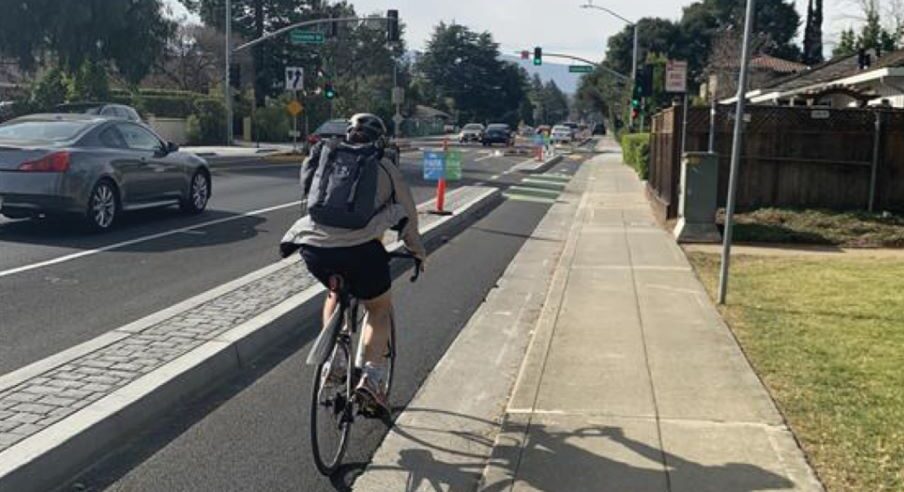Practical Tips for Implementing Class IV Bikeways

Class IV Bikeways, also referred to as separated bikeways and cycle tracks, are on-street bicycle facilities that include a vertical physical barrier between the bikeway and moving traffic, and are for the exclusive use for bicyclists.
Examples include flexible bollards, a raised curb, on-street parking, or planter boxes. While Class IV bikeways increase safety (New York saw a 57% reduction in cyclist injuries on 9th Avenue!) and comfort for bicyclists, there are some challenges when retrofitting existing streets to accommodate infrastructure needs.
Street Sweeping
Agencies may need to invest in specialized street sweeping equipment to access between the physical separation and curb on narrower Class IV bikeways. For example, the City of Sacramento has 8″ wide mini-sweepers that are narrow enough to clean between the vertical barrier/parking and the curb. Agencies should also establish seasonal sweeping schedules that prioritize major bicycle routes or areas used for vehicle parking, loading and unloading zones, and transit stops.
Drainage
Gutters, drainage inlets, and utility covers may need to be configured so as not to impact bicycle travel, however, a retrofitted separated bikeway has a relatively low implementation cost compared to road reconstruction by making use of existing pavement and drainage and potential use of a parking lane as a barrier. Separators like vertical bollards do not impede drainage, but a raised curb could. For a lower-cost solution, continuous barriers should include gaps to allow for drainage to pass through.
Transit Stops
Transit stops should also be given special consideration to manage bicycle & pedestrian interactions. Routing of cyclists behind the transit stop is preferable, however, transit space and the bikeways can be combined in restrictive conditions.
Transit Stops
Where applicable, the design will need well-defined locations for the waste bins that are intuitive and avoid blocking the bikeway.


